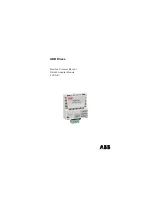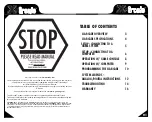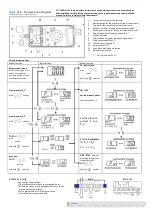13
o
Zones selected to be masters for demand calculations should represent either:
-
Typical zones or areas that will be exposed to some of the highest peak heating and
cooling loads.
-
Zones or areas that represent a significant portion of the equipment peak load capacity.
Example, if a system has five zones where a single zone represents ½ of the total MAX
CFM of the equipment, then for sure this zone needs to be master to the system.
-
Zones or areas that are subject to temporarily larger occupancy need to be part of demand
calculations if the zones are to be expected to respond during those spikes of occupancy.
Typical examples are: Conference room, cafeteria and other such common areas.
o
Attaching a zone as a master to the system which is either undersized or was commissioned with
operational flaws and errors may result in erratic system behaviour by adding total demand that
cannot be met by the system.
Notes regarding the weight parameter value of the master zones:
o
Internal zones do not need to affect heating demand calculations. They should only affect the
cooling demand calculations. Such zones will always call for cooling during occupied periods even
during winter. If they where to call for heating at a certain point in time, then the surrounding
external zones would typically already be in heating mode.
-
It is possible for an internal zone to be slightly overcooled during peak summer cooling
loads because of the dampers minimum position during occupied periods. The RTU is
providing its maximum cooling capacity and the amount of cold air provided by the
minimum position is already providing more capacity to the internal zone.
-
Alternately, it is also possible for an internal zone to be slightly overheated during peak
winter heating loads because of the dampers minimum position. During occupied periods
the RTU is providing its maximum heating capacity and the amount of hot air provided by
the dampers minimum position will provide more heat to the internal zone than necessary.
o
External zones considered of primary importance should have both their heating and cooling
weight set to 100%
o
Zones considered of secondary importance can have their weight set to a lesser value than 100%
to reflect their importance on the systems total voting when making demand calculations.
o
Due to, their location, exposure, design, etc……, certain zones can have problematic behaviour
specifically in peak heating or cooling mode. (Ex.: when an office surrounded by panoramic
windows).
These zones can have their peak load demand satisfied. However this will be either at the expense
of energy used and or slightly overheating or overcooling the other zones.
It is the responsibility of the installer to properly identify any problematic areas and to determine if
those problematic areas are to be either fully satisfied or to simply leave them unsatisfied during
certain peak load periods in order to minimize energy consumption and to allow the rest of the
zones in the system to be optimized.
When dealing with the type of system which control many areas from a single central system, a
choice must be taken during set-up to either prioritize comfort or equipment cycling and energy
consumption.
-
Adding many master voting zones (including problematic ones) to an RTU controller will
provide better comfort at the expense of higher energy consumption.
-
Restricting the number of master voting zones (and excluding the problematic ones) to the
RTU controller will always provide a more energy efficient system at the expense of
comfort in certain areas.


















